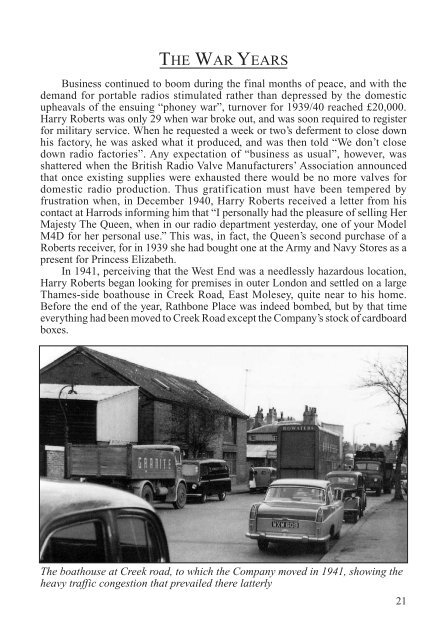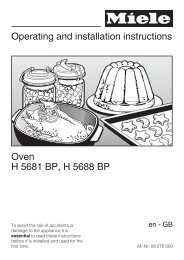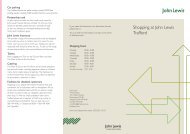Create successful ePaper yourself
Turn your PDF publications into a flip-book with our unique Google optimized e-Paper software.
the wa r ye a r s<br />
Business continued to boom during the final months <strong>of</strong> peace, and with the<br />
demand for portable radios stimulated rather than depressed by the domestic<br />
upheavals <strong>of</strong> the ensuing “phoney war”, turnover for 1939/40 reached £20,000.<br />
Harry Roberts was only 29 when war broke out, and was soon required to register<br />
for military service. When he requested a week or two’s deferment to close down<br />
his factory, he was asked what it produced, and was then told “We don’t close<br />
down radio factories”. Any expectation <strong>of</strong> “business as usual”, however, was<br />
shattered when the British Radio Valve Manufacturers’ Association announced<br />
that once existing supplies were exhausted there would be no more valves for<br />
domestic radio production. Thus gratification must have been tempered by<br />
frustration when, in December 1940, Harry Roberts received a letter from his<br />
contact at Harrods informing him that “I personally had the pleasure <strong>of</strong> selling Her<br />
Majesty <strong>The</strong> Queen, when in our radio department yesterday, one <strong>of</strong> your Model<br />
M4D for her personal use.” This was, in fact, the Queen’s second purchase <strong>of</strong> a<br />
Roberts receiver, for in 1939 she had bought one at the Army and Navy Stores as a<br />
present for Princess Elizabeth.<br />
In 1941, perceiving that the West End was a needlessly hazardous location,<br />
Harry Roberts began looking for premises in outer London and settled on a large<br />
Thames-side boathouse in Creek Road, East Molesey, quite near to his home.<br />
Before the end <strong>of</strong> the year, Rathbone Place was indeed bombed, but by that time<br />
everything had been moved to Creek Road except the Company’s stock <strong>of</strong> cardboard<br />
boxes.<br />
<strong>The</strong> boathouse at Creek road, to which the Company moved in 1941, showing the<br />
heavy traffic congestion that prevailed there latterly<br />
21





